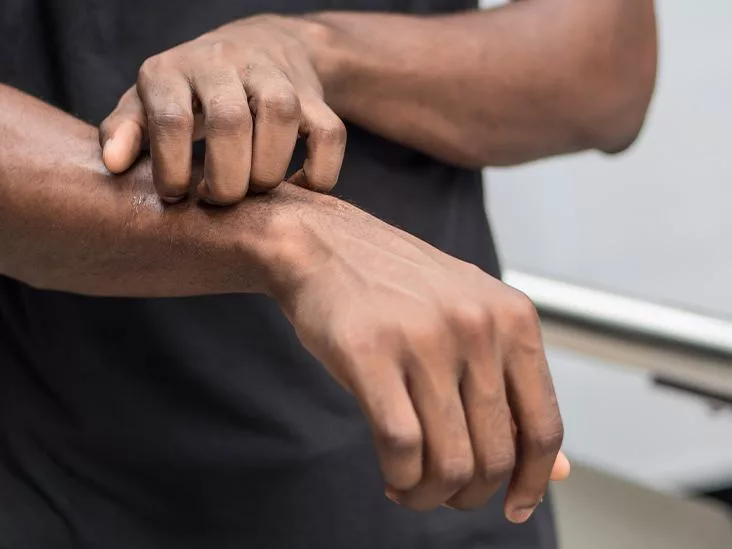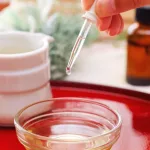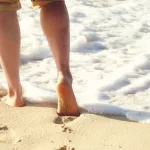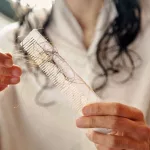Hey there! If you’ve ever stared at a round, scaly patch on your skin and wondered whether it’s something harmless or something that could spread to your roommate, you’re not alone. The two most common culprits that cause those “mysterious rings” are pityriasis rosea and ringworm. Both can look surprisingly alike, but the stories they tell your body are very different. In the next few minutes we’ll chat about why it matters, walk through a quick side‑by‑side table, and give you the toolkit you need to tell them apart without a PhD in dermatology.
Why It Matters
Picture this: you spot a pinkish patch on your back, slap on an over‑the‑counter antifungal cream, wait a week, and… nothing changes. Frustration builds, you keep scratching, and maybe you even worry about passing something contagious to your family. That’s the exact scenario many people face when they mistake pityriasis rosea for ringworm. Getting the diagnosis right saves you from wasted products, unnecessary anxiety, and – in the case of ringworm – from unintentionally sharing a fungal infection with your kids, pets, or gym buddies.
On the flip side, if you think a fungal infection is just a harmless viral rash and skip the antifungal, the fungus can spread, turn itchy, and even affect other parts of your body (think scalp or nails). So the stakes are real, but the good news is that the clues are right there on your skin – you just need to know what to look for.
Quick Comparison
| Feature | Pityriasis Rosea | Ringworm (Tinea Corporis) |
|---|---|---|
| Cause | Likely viral (HHV‑6/7) – not contagious | Dermatophyte fungus – highly contagious |
| First sign | “Herald patch” – single oval, pink‑salmon | Ring‑shaped lesion with raised, scaly edge |
| Typical spread | Smaller “daughter” patches in a “Christmas‑tree” pattern | Expanding concentric rings; may merge |
| Itch level | Mild‑to‑moderate, worse with heat | Often intense, especially at edges |
| Diagnosis tools | Clinical exam; KOH negative; possible viral panel | KOH prep positive; fungal culture if needed |
| Treatment | Topical steroids, antihistamines, UV‑B; usually self‑limited | Topical antifungal (clotrimazole, terbinafine) ± oral meds |
| Duration | 4‑8 weeks (self‑limiting) | Until therapy completed (≈ 2‑4 weeks) |
That table packs a lot of info in a bite‑size format, perfect for a quick glance while you’re at the bathroom mirror. A study from Healthline highlights that more than 70 % of patients who confused the two ended up using the wrong medication at first.
Pityriasis Rosea
What Is It?
Pityriasis rosea is essentially a viral‑triggered skin eruption that loves to show up in teenagers and young adults – think ages 10‑35 – often during the spring or fall. The first actor on the stage is the “herald patch,” a solitary, slightly raised, pink‑to‑salmon lesion that can be anywhere from one to four inches across. On darker skin tones that patch may appear gray‑violet or brown, which can make it look even more like a fungal infection.
Pityriasis rosea symptoms
Before the rash appears, up to a third of patients report a brief flu‑like illness: low‑grade fever, sore throat, or a runny nose. Then the herald patch shows up, usually on the trunk, and within a week or two a cascade of smaller, oval or circular “daughter” patches spreads out. The classic “Christmas‑tree” pattern – patches aligning along the spine and ribs – is a tell‑tale sign. Itching is common, especially after a hot shower or a sweaty workout, but it rarely turns the skin raw.
Why it’s not ringworm
First, pityriasis rosea isn’t contagious. You can’t spread it by sharing towels or hugging a friend. Second, antifungal creams won’t budge the rash because the cause isn’t a fungus at all. That’s why many people feel frustrated when the “cure‑all” tube sits on the shelf for weeks with no improvement.
Treatment & home care
Because the condition usually clears on its own, treatment focuses on comfort:
- Topical steroids: Low‑ to mid‑potency creams (hydrocortisone 1 % or triamcinolone) applied twice a day can calm inflammation.
- Antihistamines: Over‑the‑counter options like cetirizine help the itch, especially at night.
- UV‑B phototherapy: In more extensive cases, a short course of UV‑B can speed resolution.
- Self‑care tips: Lukewarm baths, loose cotton clothing, and avoiding hot tubs or saunas reduce flare‑ups.
If the rash lingers beyond eight weeks, or if you develop fever, severe pain, or a new rash pattern, it’s time to see a dermatologist. A quick visit can rule out other possibilities and give you peace of mind.
Ringworm
What Is It?
Ringworm, medically called tinea corporis, is a fungal infection caused by dermatophytes such as Trichophyton or Microsporum. The organism loves warm, moist environments – think gym mats, shared towels, or a pet’s fur. Unlike pityriasis rosea, ringworm is contagious and can hop from person to person, animal to person, and even survive on surfaces for weeks.
Ringworm symptoms
The classic picture is an annular (ring‑shaped) lesion with a raised, scaly border and a relatively clear centre. The edge may feel itchy or even burn, and the centre can stay normal‑looking or become slightly pink. Lesions can appear anywhere: torso, arms, legs, and even the scalp (where it can cause patchy hair loss). In kids, the groin area (jock itch) and the feet (athlete’s foot) are common companions.
How doctors confirm it
A simple skin scraping examined under a microscope with potassium hydroxide (KOH) reveals branching fungal hyphae. This test is quick, cheap, and over 90 % sensitive, according to Healthline. If the picture isn’t typical, a fungal culture may be ordered.
Ringworm treatment pathway
Most cases respond to topical antifungal creams applied twice daily for two to four weeks. Popular options include:
- Clotrimazole 1 %
- Terbinafine 1 %
- Miconazole 2 %
For extensive body involvement, scalp infection, or stubborn cases, oral agents like griseofulvin or itraconazole may be prescribed. Remember, oral antifungals can affect liver function, so a short blood test is often performed if treatment exceeds a month.
Preventing spread
Because ringworm loves to travel, consider these hygiene habits:
- Wash bedding and towels in hot water weekly.
- Avoid sharing personal items (clothes, shoes, hairbrushes).
- Check pets – especially cats and dogs – and treat them if they show signs of fungal infection.
- Keep skin dry; use powder in folds if you’re prone to sweating.
Spot the Difference
Step‑by‑step visual test
- Shape: Is the first lesion an oval “herald” or a perfect circle with an annular edge?
- Border: Does the edge feel scaly all over (pityriasis) or raised and thick (ringworm)?
- Center: Is the centre still pinkish (pityriasis) or clear/normal‑looking (ringworm)?
- Spread pattern: Look for the “Christmas‑tree” alignment – that’s PR. Random expanding rings point to tinea.
- Itch trigger: Heat and sweat amplify PR itching; ringworm itch tends to stay constant, often worse at the edge.
Quick decision tree
If you’re still stuck after the visual test, here’s a simple flow:
- Single large oval patch → think pityriasis rosea.
- Ring with raised border → think ringworm.
- Any doubt? → ask your doctor for a bedside KOH test. It’s painless and gives you an answer in minutes.
When to see a professional
Even the most seasoned friend can’t replace a dermatologist’s eye. Reach out if:
- The rash lasts longer than three weeks without improvement.
- You notice fever, severe pain, or blisters.
- It spreads rapidly to new body parts.
- You have a weakened immune system or chronic skin condition.
Living With
Ringworm: Long‑term care
After you’ve cleared the infection, keep an eye on the usual suspects: gym equipment, locker rooms, and pet fur. A quick wipe with an antifungal spray on surfaces can stop a re‑infection before it starts. If you’ve treated a pet, be sure to finish the full course; otherwise the fungus can hop back to you.
Pityriasis rosea: Post‑rash care
Even when the rash fades, a few people notice lingering hyperpigmentation, especially on darker skin tones. Gentle moisturizers with niacinamide or vitamin C can even out the tone over weeks. And if you’ve had PR before, you now have a mental cheat‑sheet – you’ll recognize the herald patch the next time it tries to show up.
Balancing benefits and risks
Both conditions have “benefits” in disguise: PR can act as a sign that your immune system just fought off a viral infection, while ringworm teaches us the importance of personal hygiene and pet health. The risks, however, are avoidable with the right knowledge – that’s why we’re digging into the details together.
Conclusion
So, what’s the bottom line? Pityriasis rosea and ringworm may look similar at first glance, but they tell two very different stories. One is a short‑lived viral rash that isn’t contagious; the other is a fungal infection that loves to spread. By paying attention to the shape of the first lesion, the texture of the border, and the way the rash spreads, you can usually tell them apart without a trip to the pharmacy aisle. When in doubt, a quick KOH test or a short dermatologist visit clears the fog.
Now that you’ve got the cheat‑sheet, you can face any round patch with confidence. Have you ever misidentified a rash? Share your experience in the comments – it might help the next reader avoid the same mix‑up. And if you still have questions, feel free to ask; we’re all in this skin‑adventure together!


















Leave a Reply
You must be logged in to post a comment.